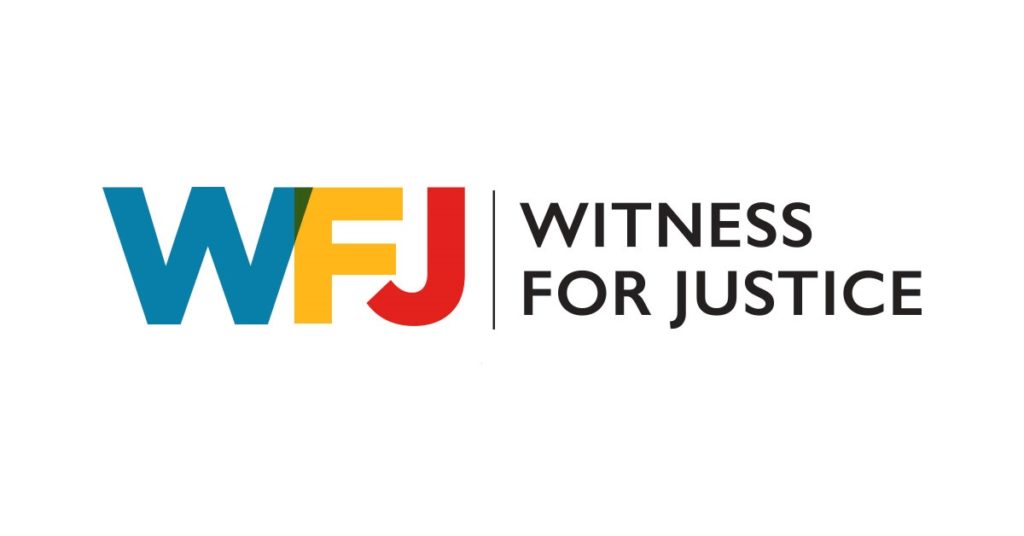WAR IS OVER (if we want it)/PEACE IS POSSIBLE (if we build it)
A few weeks ago, I visited New York City with my family. As we walked through the bustling Times Square, I remembered that just over fifty years ago—December 15, 1969—a giant black-and-white banner hung in this sensorily overloaded center of American culture and consumption with a simple message: “War Is Over! (If You Want It).” The “War is Over” peace campaign was developed by Yoko Ono and John Lennon and launched in 1969. It strategically used the marketing techniques of advertisers to spread a message of peace across billboards, newspapers, and radio broadcasts in capitols around the world. Banners hung in twelve cities, including New York, Los Angeles, London, Rome, Paris, Tokyo, Berlin, and others. The song “Happy Xmas (War Is Over),” recorded with the Harlem Community Choir in 1971, furthered this message and remains on many of our Christmas playlists today.
The messages of the anti–Vietnam War movement laid bare the insanity of war. Give peace a chance! shifted public opinion and ultimately pressured governments to bring the conflict to an end. While we know that all wars end at the diplomatic table, history has also given us examples of how simple acts and messages of peace or common humanity can interrupt violence. One of the most famous of these examples in history is the “Christmas Truce” in 1914, that occurred during the First World War.
By November of 1914, roughly 100,000 soldiers were mired in trenches across Belgium that stretched 500 miles from the English Channel to the Swiss border. The brutality of trench warfare had been made worse by extreme weather and scarce resources. By December, morale was low. Although there are stories of spontaneous ceasefires taking place earlier along the line, historical accounts suggest that a wider ceasefire took hold on Christmas Eve, as German soldiers put up candles and sang “Stille Nacht, heilige Nacht,” which was met with verses of “the First Noel” on the British side. Brave soldiers ventured from the trenches waving flags, exchanged greetings and gifts, and even shared in a game of football (soccer) on the battlefield. While the ceasefire only lasted a day it remains a moment in history in which the world saw that, even in the darkest hour, peace is (still) possible.
As we near this Christmas, as war rages on in Ukraine and in so many places, let us take to heart that peace is possible. That war can be over—if we want it and if we work for it. This year, several peace movements, including the Fellowship of Reconciliation, are calling on US policymakers to support a “Christmas Truce” in Ukraine in the spirit of the 1914 Christmas Truce. They are advocating for an armistice starting December 25 until Orthodox Christmas on January 7, 2023. To add your name to this effort, consider signing here: https://bit.ly/ukrainetruce. Such a truce, if agreed to, could be an important step toward wider diplomatic talks and a just and peaceful end to the conflict. Friends, let us push back against the cynicism and apathy that too often keeps us from boldly proclaiming the message our Prince of Peace brought to the world. It is the vision that somehow, someday, God’s kingdom will come. Swords will be forged into plowshares, the wolf will lie with the lamb, all will have enough, and we will learn about war no more. May it be so!
ABOUT THE AUTHOR
Michael Neuroth is the Policy Advocate for International Issues for the United Church of Christ.
View this and other columns on the UCC’s Witness for Justice page.
Donate to support Witness for Justice.
Click here to download the bulletin insert.
Related News
Recalling the Ministry of Reconciliation
The November 2024 election results left me, and many of my friends, neighbors, and family...
Read MoreFaith that Calls for Welcome Confronts the Harshest Anti-Immigrant Policies in Modern U.S. History
“In the name of our God, I ask you to have mercy upon the people in our country who are...
Read MoreWarning Labels
In 2020, on the eve of the global lockdown due to the spread of the then mostly unknown...
Read More